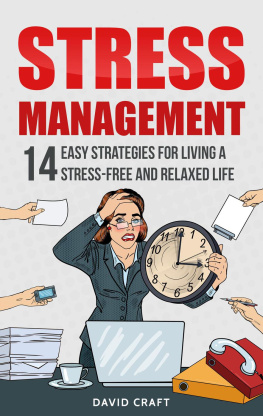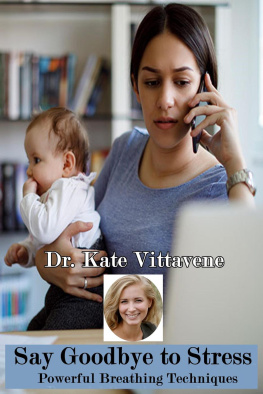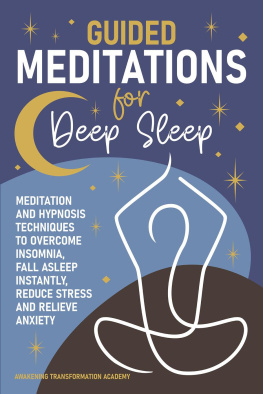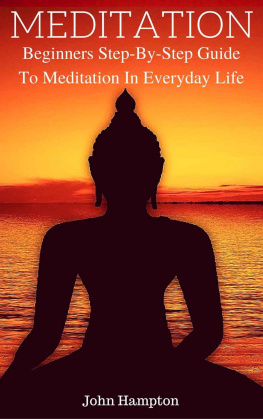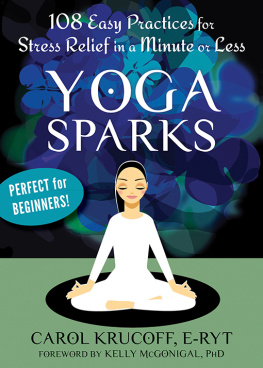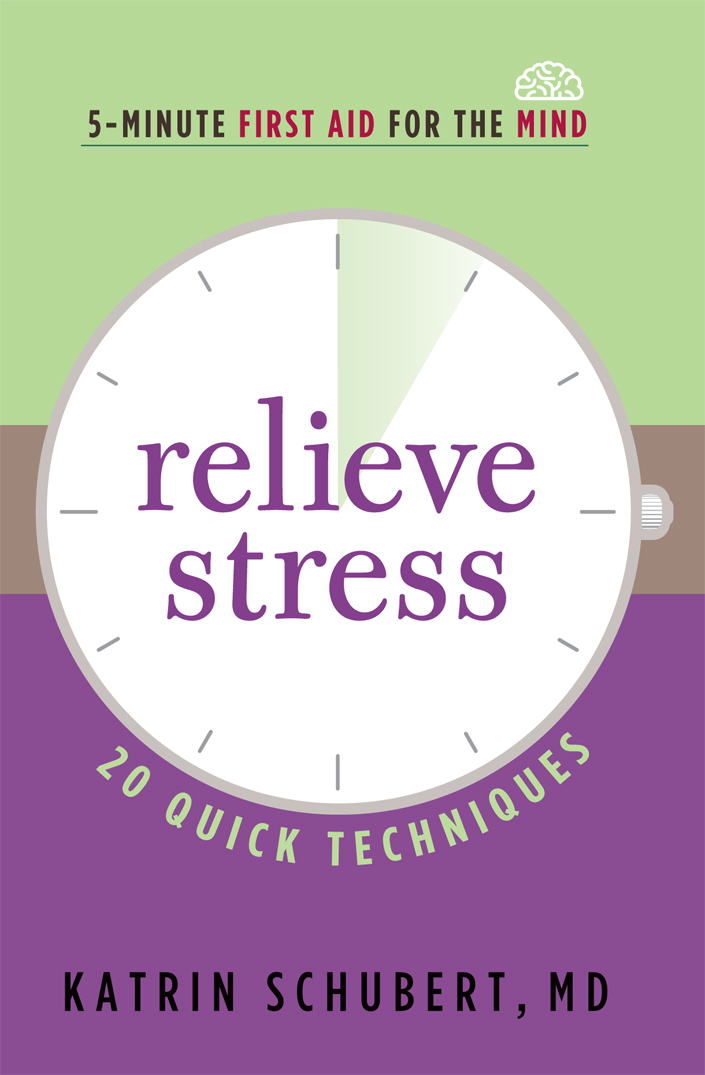
Hazelden Publishing
Center City, Minnesota 55012
hazelden.org/bookstore
2016 by Katrin Schubert
All rights reserved. Published 2016.
No part of this publication, either print or electronic, may be reproduced in any form or by any means without the express written permission of the publisher. Failure to comply with these terms may expose you to legal action and damages for copyright infringement.
ISBN: 978-1-61649-640-1
Library of Congress Cataloging-in-Publication Data is on file with the Library of Congress.
Editors notes
The names, details, and circumstances may have been changed to protect the privacy of those mentioned in this publication.
Any information in this book is offered for your well-being only and is not intended to diagnose illness, nor is it a substitute for medical care. Please contact your physician or hospital for any health care concerns.
Do not use these techniques while driving a car or operating heavy machinery.
20 19 18 17 16 1 2 3 4 5 6
Cover design: Kathi Dunn, Dunn + Associates
Interior illustrations: David Spohn
Author photo: Deb Stagg
Developmental editor: Sid Farrar
Production editor: Heather Silsbee
With gratitude to Lyell and Jillian, my family, friends, and my clients who have taught me everything!
And to Thomas for his invaluable support.
Table of Contents
Guide
CONTENTS

The inspiration for this book came from many years working as a holistic medical doctor outside of the allopathic (traditional Western) medical approach. I am licensed as a physician in Germany. I work and live in Canada and have been in private holistic health care for over two decades. While practicing in the 1990s, I observed that my patients lives were increasingly burdened with layoffs, cutbacks, and double-income earners needing to work overtime just to make ends meet.
From the vantage point of the second decade of the twenty-first century, the nineties now look like a still life of serenity. Today, traffic, climate change, and electromagnetic pollution are compromising our health and well-being. Instead of visiting with friends in person, we now spend hours tapping on our electronic devices, opting to interact in virtual reality, which damages our quality of life and weakens our immune system. My colleagues and I began to notice that, in contrast to the run-of-the-mill health concerns of a decade ago, our practices were becoming flooded with people suffering from ever-increasing and often debilitating anxiety and stress.
My clientele also shifted from mainly women with emotional concerns to include men and adolescents complaining about high levels of fear and nervousness. Men were no longer able to suppress their anxieties the way they had been brought up to do. And many young people were unable to deal with life due to depression and fear of the future.
Curious about this phenomenon, I started searching for answers. The underlying causes of increased stress are countless. Environmental toxins, substance misuse, shifting values, reduced time off from work, social and family time constraints, and fear of financial instability are but a few.
The good news is that there is much we can do by ourselves, for ourselves. We have tools we can apply effectively to help us cope with the stress of everyday life.
Relief from the Mental Race
We are told that all power lies in the present moment. Yet, unlike other animals, humans find it challenging to stay focused in the present. Excessive worry means we spend too much time thinking of the future, while dwelling on the past can lock us in anger, sadness, and fear.
Do you spend some or even many of your precious days feeling rattled? Does the swirl of sudden bad news unhinge your mind and body? Do people challenge you, pushing sensitive buttons and making you feel angry or anxious, triggering a reminder of some past painful event that awakens difficult emotions? Does it seem that at times your whole being is struggling to find the ground under your feet, that you are sinking into the quicksand of negativity? Then you are just like me, part of the human race in our Western world of timelines, social frameworks, and family and work dynamics that have a mind of their own.
Being stuck in acute anxiety or negative thoughts robs us of lifes pleasures and can even make us sick. Research has shown what we intuitively know: a challenged mind and trapped emotions can cause physical illness.
In , youll find background and theoretical information on the techniques to help you understand how and why they work.
No single intervention, including those in this book, will solve all of the complex personal and societal problems that cause mental unrest. But regardless of your age or background, the techniques I have gathered can give you temporary relief from the stress caused by the mental-race-with-no-end we find ourselves in. They can reset the thermostat of your nervous system and bring calmness that results in mental, emotional, and physical well-being to see you through difficult situations.
I invite you to try out these techniques and hope that you will find several that make your life calmer and more manageable.
Enjoy the journey!
Publishers note:
Stress is a major contributor to cravings for unhealthy foods, alcohol, and other substances and a few of the techniques in this book are also recommended in another 5-Minute First Aid for the Mind title, Reduce Craving.




RACHEL WAS A SIXTEEN-YEAR-OLD STUDENT with special needs. When Rachel was in her mid-teens, she was functioning on the level of an eleven-year-old. Intellectually younger all her life, she had suffered from anxiety that was even greater than what is normally experienced by many teens, causing her to feel overwhelmed much of the time.
Rachel was asked to move to a different classroom, and while adjusting to her new surroundings she decided to teach her classmates and new teacher several exercises she had learned from her previous teacher. Those exercises, which are the techniques presented in this book, had improved her coping skills and lessened her anxiety, and she was hopeful that her new classmates would benefit from them as much as she had.
In that spirit I share these techniques with you and hope that by using them you find more peace of mind, as Rachel and her classmates did.



